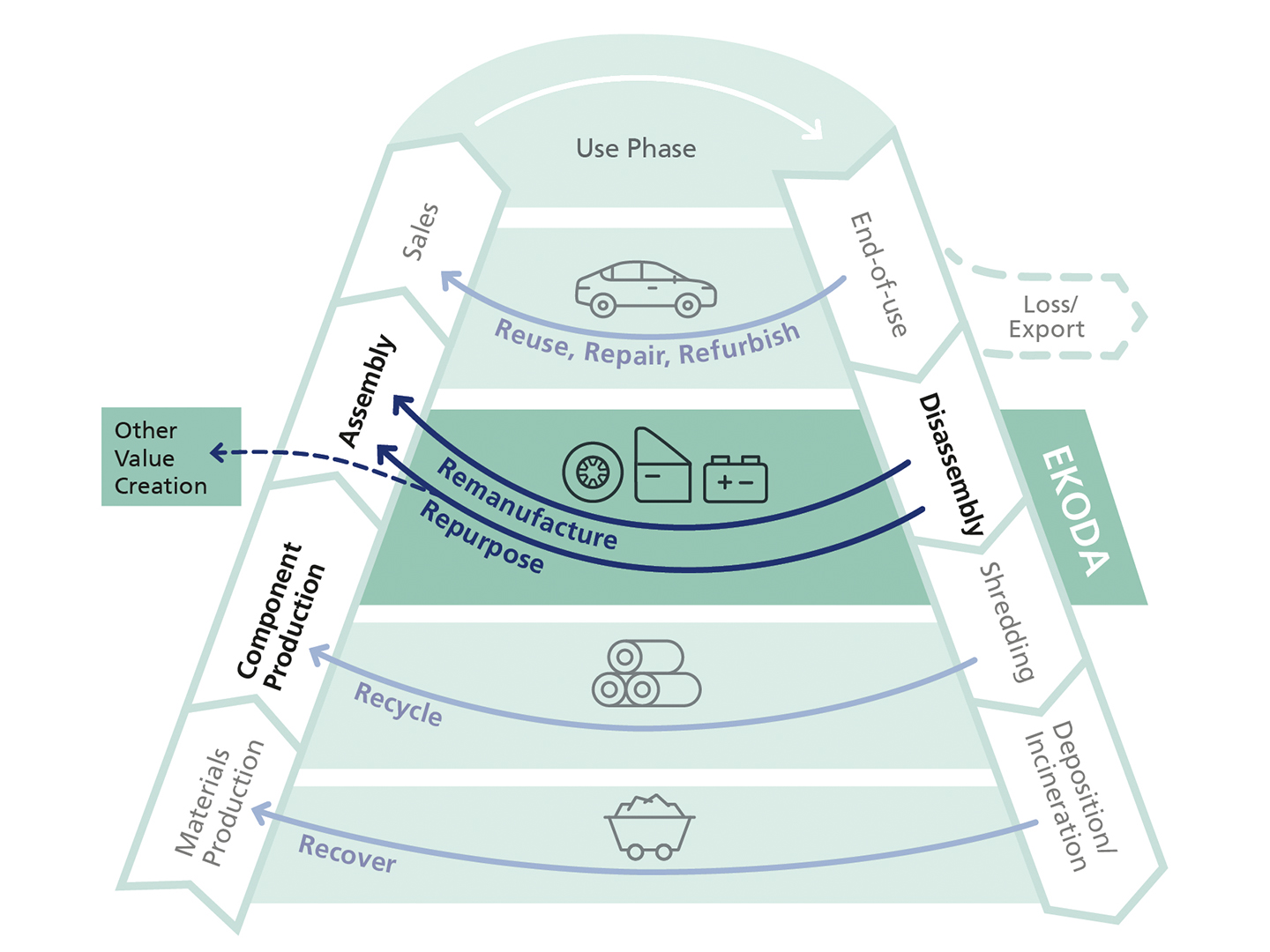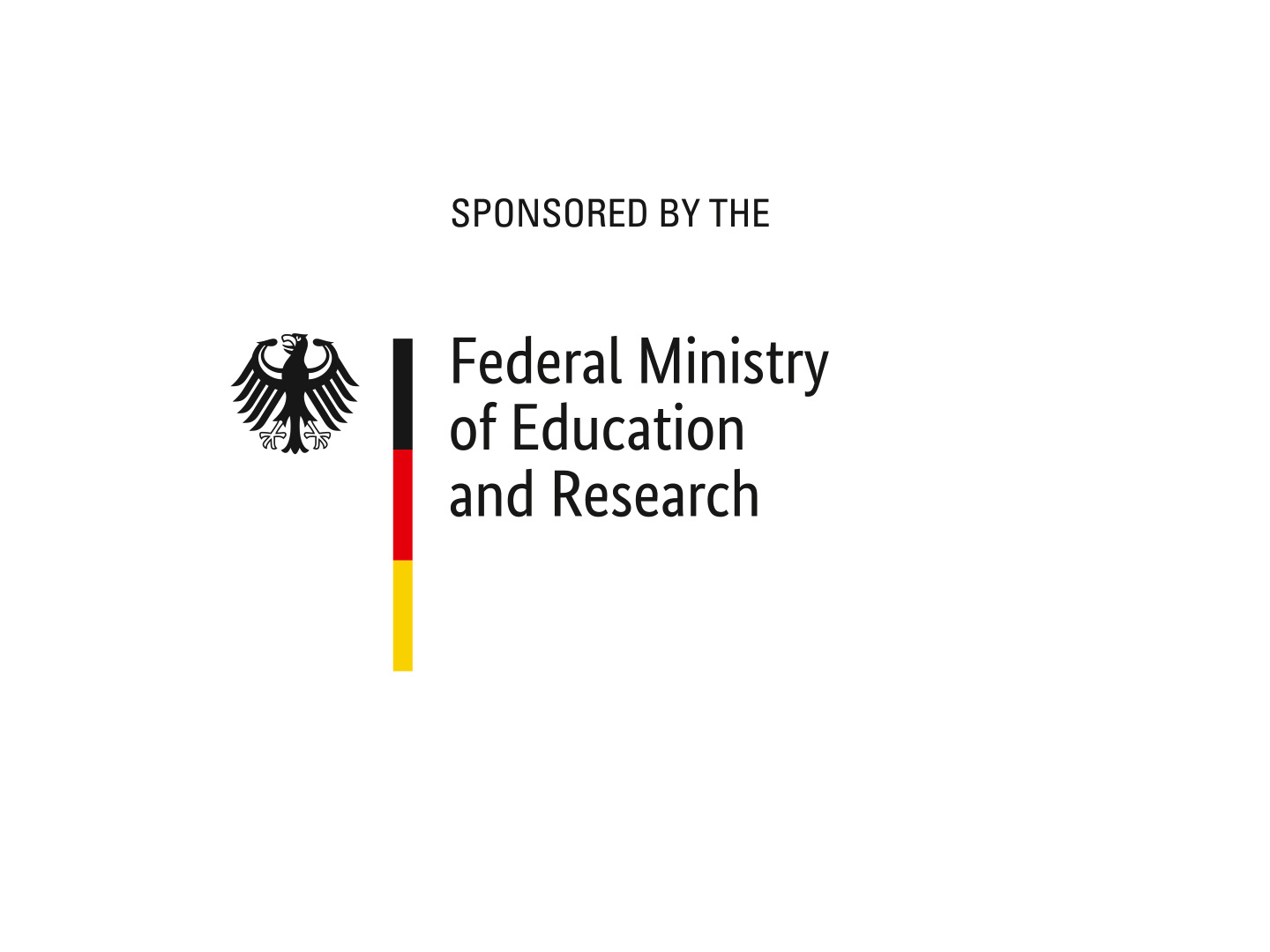In Germany, 2.78 million cars were decommissioned in 2020. However, only 400,000 of these were subsequently recycled.[1] The exploitation of resources is becoming increasingly important with regard to the change in traffic patterns, electrification of drive systems, resource efficiency and resource conservation. Batteries in particular, which consist of important and rare resources, will have to be replaced in the future before the end of a car's life cycle. However, their dismantling is very costly and associated with strong safety requirements. In practice, companies therefore tend to recycle or export end-of-life vehicles or defective young vehicles instead of reusing them at component level. As a result, raw materials and energy that were used in production are lost to a large extent. Consequently, economically and ecologically viable concepts are needed at an early stage, e.g. for dealing with used batteries.
In the "EKODA" project, Fraunhofer UMSICHT is researching opportunities, obstacles and potentials in the implementation of value-adding and environmentally sound component and resource circulation. For this purpose, the researchers conduct stakeholder analyses, involve current and future actors within the value chain, prepare the findings in a manner appropriate to the target group, and develop concepts for new business models with high acceptance and economic attractiveness.
The optimal utilization route
In the "EKODA" project, researchers are examining two different exemplary use cases: traction batteries from electric vehicles and metallic (sheet metal) components. In the first step, they collect data on the condition of these components, including remaining capacity, charge status, and charge cycle information. This data enables them to evaluate various scenarios for reuse. Possible scenarios for battery reuse include continued use in automobiles with high performance requirements, or the dismantling and potential replacement of individual defective modules or cells. Additionally, there is also the possibility of using the entire battery, modules, or individual cells in other applications such as stationary or mobile energy storage systems, or electrified drives with lower performance demands. For metallic components that cannot be reused due to age or technical limitations, they can be transformed into new components through processes like forming or machining. When evaluating all recycling paths, efficiency and value retention of the materials have priority.
Business models and stakeholder interaction
In addition to exploring different usage scenarios, the project also focuses on the practical feasibility of implementing circular economy strategies in the automotive industry. At Fraunhofer UMSICHT, the researchers investigate the impact and acceptance of these strategies, aiming to identify the barriers that hinder successful transformation, the key pioneers driving change, and the technological, regulatory, and social levers that can facilitate this transition. The researchers examine existing business models and explore the potential for new business opportunities. Simultaneously, they address the challenges related to acceptance of adaptation measures, such as product design, utilization of used parts, and implementation of characteristic value systems. By employing simulation techniques, they estimate the ecological and economic effects of these strategies. To gain a comprehensive understanding of the practical feasibility, they also conduct interviews with a wide range of stakeholders, including suppliers, car manufacturers, users, recyclers, dismantlers, insurers, associations, and potential users of second-hand parts.
Circular design as the key to efficiency
Product design to date has focused on optimizing manufacturing and assembly (Design for Manufacturing (DfM), Design for Assembly (DfA)) - in other words, efficiency in creating value (raw material to product). However, measures for easier value retention and later reuse are missing. Fraunhofer UMSICHT identifies design patterns that hinder the circular economy and develops alternative designs. These meet the needs of alternative utilization routes (Design for Disassembly (DfD), Design for Remanufacturing (DfRem)) as well as for needs of second life applications.
[1] End-of-life vehicle recycling and vehicle fate | Federal Environment Agency
 Fraunhofer Institute for Environmental, Safety and Energy Technology UMSICHT
Fraunhofer Institute for Environmental, Safety and Energy Technology UMSICHT
